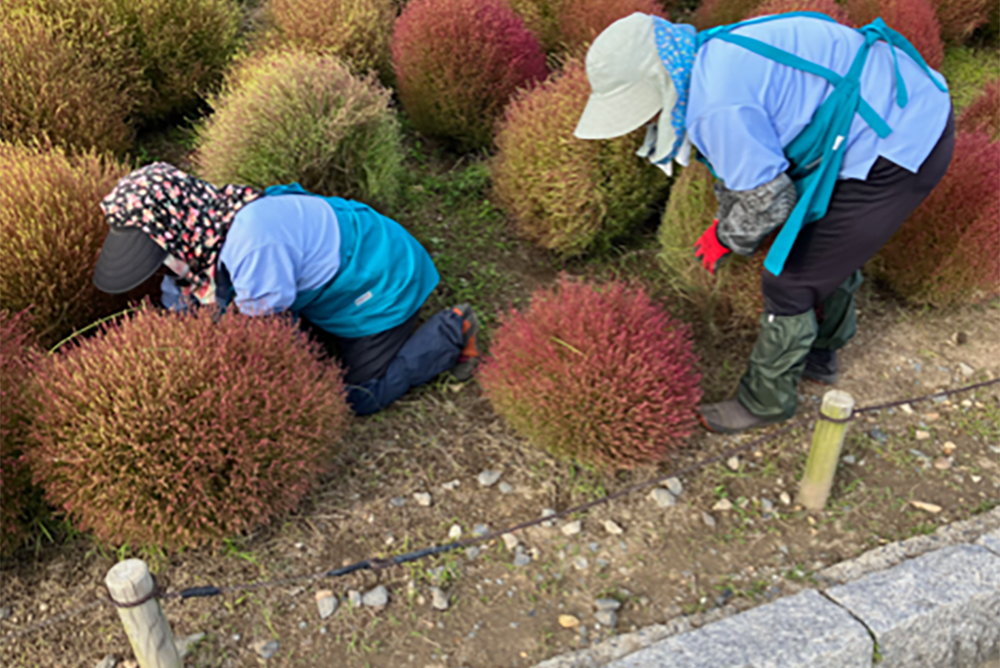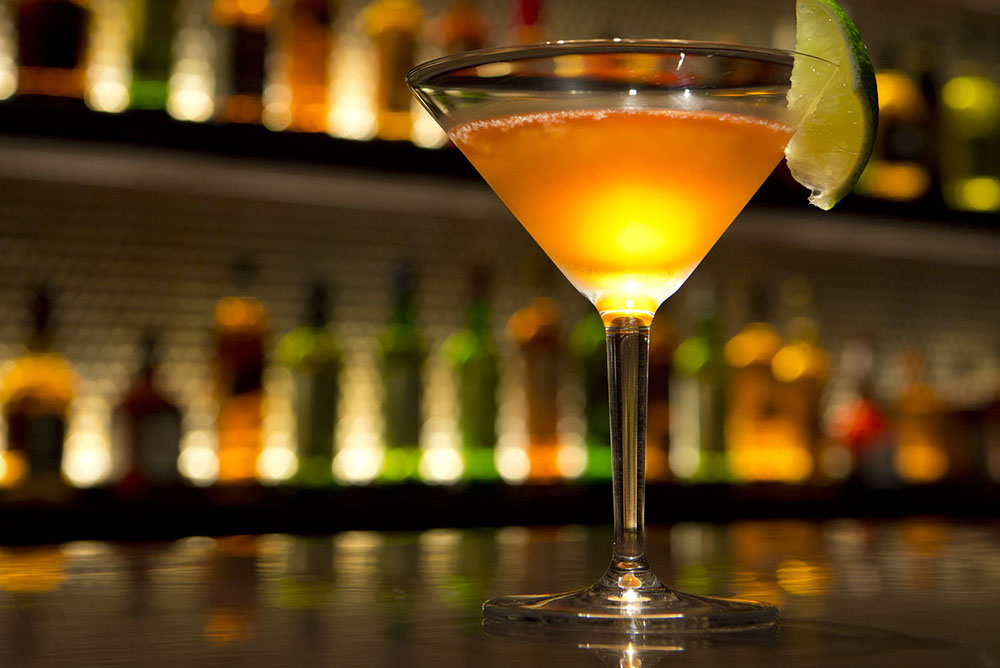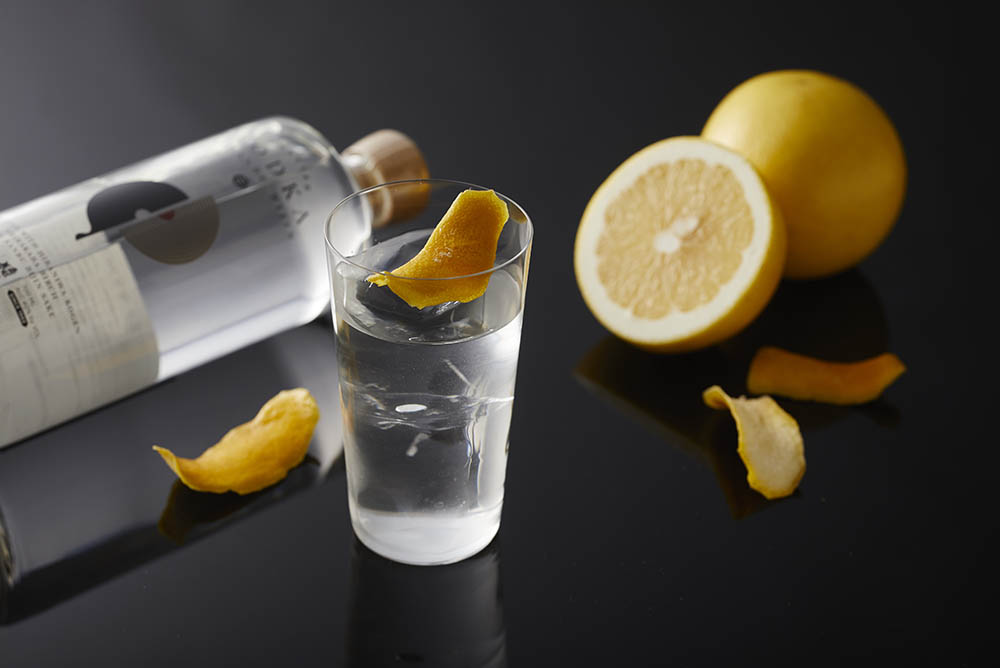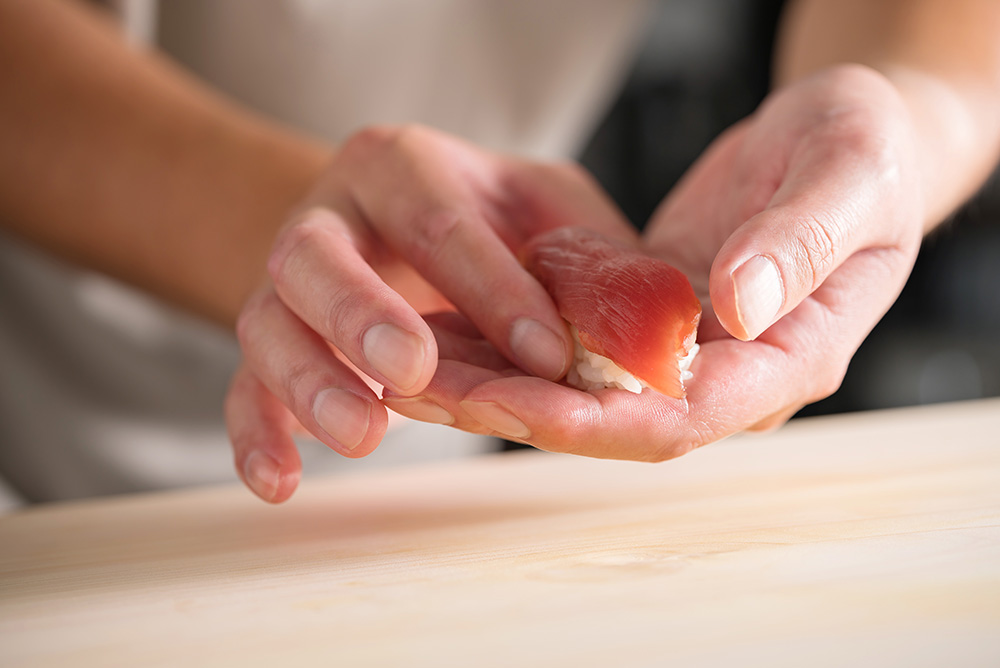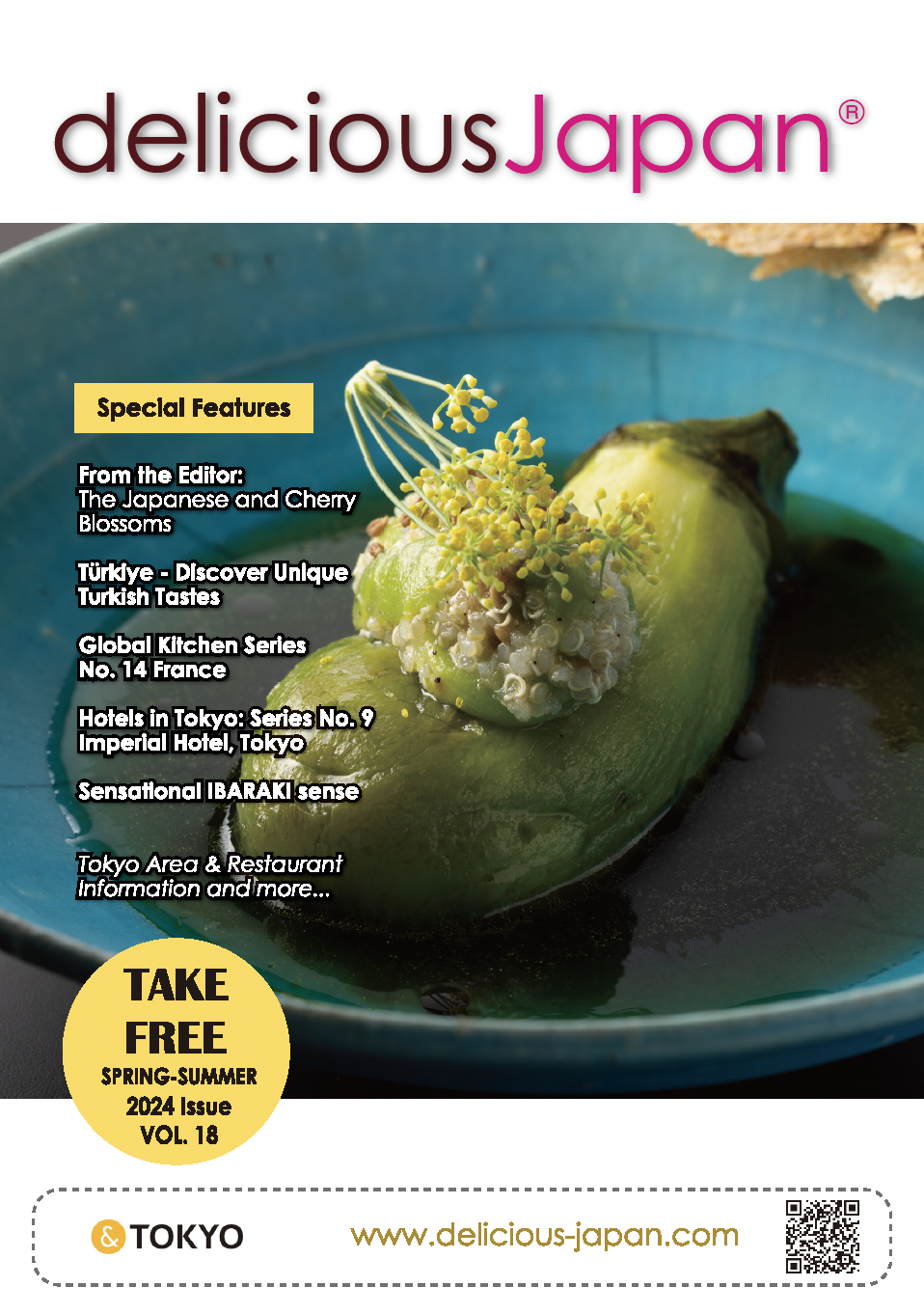
Tradition and Culture of Japanese Cuisine

Hiroshi Nagashima
Hiroshi Nagashima
Born in 1946. Owner of the Yasai Kaiseki "Nagamine." Awarded “Great Craftsmen in the Edo” and “Great Craftsmen in the Present World” and others. Has written many publications on Japanese cuisine, including "The Encyclopedia of Japanese Culinary Tradition and Culture." Working as Goodwill Ambassador for Japanese Food since February 2015.
Goodwill Ambassador for Japanese Food
The Ministry of Agriculture, Forestry and Fisheries has appointed the actress Rei Dan as a Special Goodwill Ambassador for Japanese Food, as an effective PR method to spread the appeal of Japanese food and culinary culture in Japan and overseas. It also appointed 13 people involved with Japanese cuisine as Goodwill Ambassadors for Japanese Food, to give reliable advice on how to spread Japanese food and Japanese culinary culture.
Tell us about Japan's unique culinary culture
The kanji characters for the word “ryori” (cooking) mean measuring things and putting them in place. “Measuring” means not just measuring weights, but also gauging the guest’s tastes, the sense of the current season, the surrounding environment, and other aspects, and the result that is served is “ryori”.
The roots of Japanese cuisine lie in honzen ryori (set meals served on personal trays or tables). The shojin ryori (vegetarian dishes) cooked at temples are a variant of honzen ryori. That shojin ryori is, in turn, the basis for today’s chakaiseki (light meals served with the tea ceremony).
Honzen ryori is served at ceremonial occasions. It is prepared in patterns such as one soup and three side dishes, one soup and five side dishes, or two soups and five side dishes, to fit a zen (tray) of predetermined size. Naturally, it was served cold. The idea of “serve cold things cold, and warm things warm” evolved from shojin ryori. After that the idea of “hugging a warmed stone to one’s belly to temporarily assuage pangs of hunger” in chakaiseki turned into the serving of simple dishes to warm the stomach and relieve hunger before the tea is served.
What about the sequence for eating Japanese cuisine?
In honzen ryori, shojin ryori, and chakaiseki, the common element is to “eat the rice first”. These are types of meals to serve to guests, so they are always served with alcohol. The Japanese understood long ago that drinking alcohol on an empty stomach is bad for the body.
Take the example of chakaiseki. Gohan (cooked rice), shiru (soup) and “omukou” (sashimi etc., literally items on the other side) are all served, but it’s wrong to reach for the sashimi first. First, take a mouthful each of the rice and soup. Next, drink some of the alcoholic drink you are offered, and only then can you eat the sashimi. In this way, Japanese cuisine doesn’t just provide a good nutritional balance, it also thinks about the body itself.
I hear that Japan uses a lot of fermented foods
“Mold culture” is essential to any discussion of Japanese food. This doesn’t mean harmful mold, but the fermented foods that represent Japan, such as miso, shoyu, sake, and natto. These fermented foods give the digestive system beneficial stimuli, and improve physical health.
Tell us about consideration of the seasons in Japanese cuisine
I think Japanese cuisine means “seasonal cuisine equals eating with the season”. Japan has four seasons, and we Japanese value them. In Japanese cuisine, in particular, the seasons are further divided into three parts: “hashiri”, “shun”, and “nagori”, which are held as highly important.
Ingredients in the “hashiri” portion of their season are those that are produced early or are just starting to come out. They are unusual, and command high prices. “Shun” ingredients have high nutritional values and are at the peak of their harvest season, so they are relatively cheap. Finally, “nagori” is perhaps the melancholy feeling that shun has passed and that ingredient will soon be gone.
What about the attention to utensils?
Japan has a unique culture of using utensils such as kitchen knives, chopping boards, and chopsticks.
The culture of “hocho” kitchen knives has a particularly long history. Documentary records indicate that their designs were perfected around 1,700~1,800 years, and the “hocho-shiki” ceremony was performed in which ingredients are cut and arranged into various forms with only the hocho andchopsticks, never touching them directly with the hands. The hocho-shiki performed by a hocho-nin (cook or chef, but literally written as “hocho-person”) is now performed at events and ceremonies, such as offerings at local shrines.
What are the characteristics of Japanese hocho?
In contrast to double-edged blades that cut with a pushing stroke, Japanese hocho are single-edged and cut with a drawing stroke, so they cut without squashing the ingredients, and seal their umami constituents inside. Of course, different hocho are used for different ingredients, and the cutting techniques also differ. For example, tuna fish is cut thick, while sea bream is sliced thinly. If tuna is sliced thinly, it loses its flavor, so it is cut thick, but more chewy fish such as sea bream are sliced thinly to avoid unpleasant sensations when chewing them. Japanese people don’t just know the most delicious ways to eat seasonal ingredients, they are also a people who know more skillful methods for finishing the preparation of those ingredients.
What about the attention to dishes?
Dishes are essential to Japanese cuisine. There are many different dishes, but I think the most outstanding among them is the lacquered bowl. Urushi lacquer is coated onto a thin bowl base, and when you drink from it, the liquid is hot, but the part you hold in your hand, and the part that touches your mouth, do not get hot. Besides the flavor of the food, its visual beauty is also important, and I think Japanese “care for the unseen parts” is manifested in this kind of bowl.
What about the attention to eating combinations?
Japan has valued eating combinations of ingredients since ancient times. Examples include “sashimi from the sea and wasabi (Japanese horseradish) from the mountains” and “soba (buckwheat noodles) from the mountains and grated daikon (Japanese radish) from the village”. Yakumi (condiments) are prized in a culture of eating combinations. The kanji for yakumi mean “taste of medicine”. They are not seen as so important nowadays, but it used to be thought that failure to eat these condiments had a bad effect on health. In that sense, Japanese cuisine is not just about delicate flavoring with seasonal ingredients and visual beauty. It’s a perfect, health-conscious cuisine, of a kinds seen nowhere else in the world.

